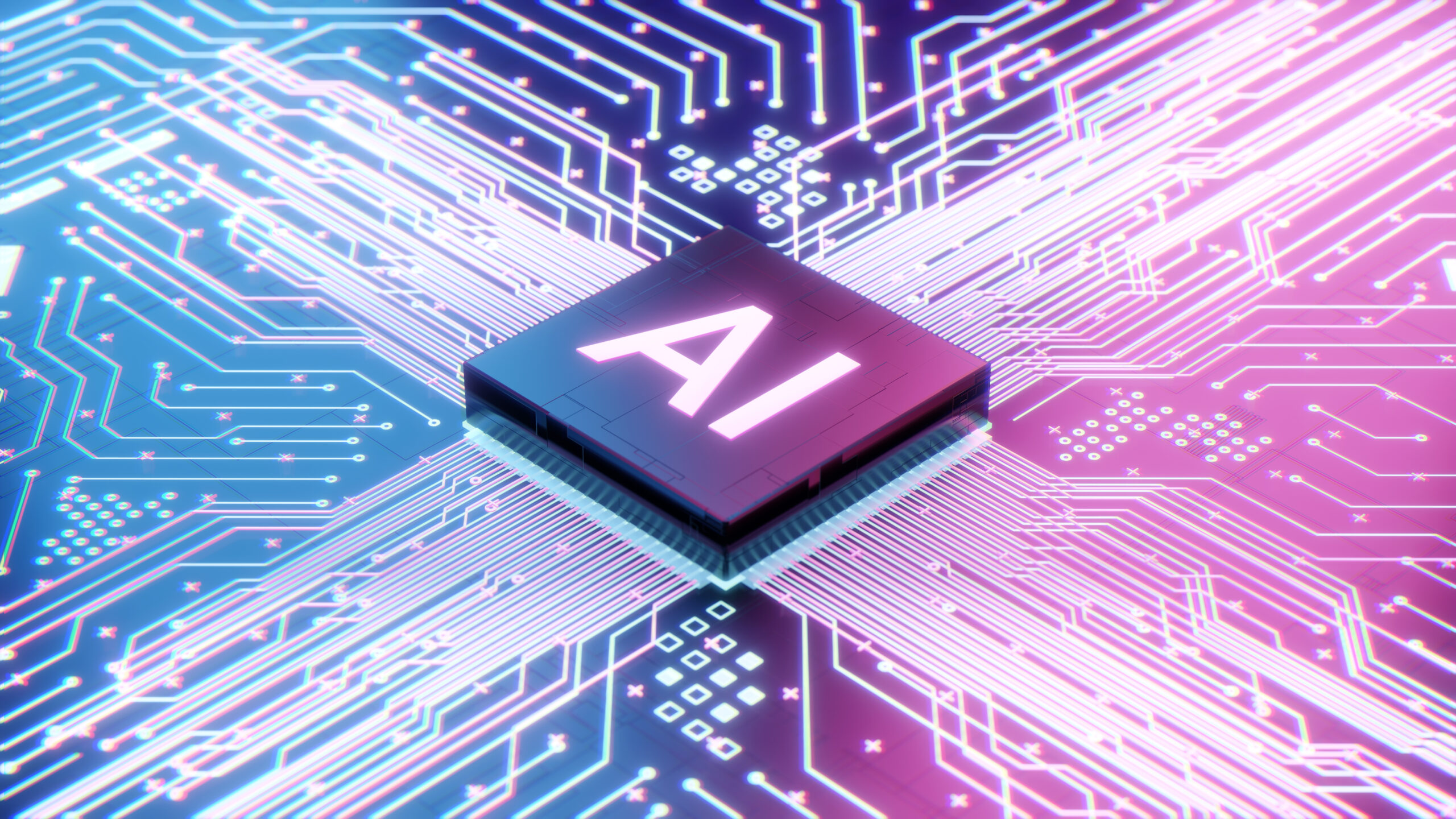2024 Guide to Artificial Intelligence Software Development
Spending on AI and ML technologies is expected to reach $299.64 billion in 2026. That number will only grow as more software companies adopt these emerging technologies. Rapid digital transformation spurred by COVID-19 pushed many organizations to invest; those who haven’t yet explored AI and ML may find themselves playing catch-up to stay competitive. Many have already seen AI’s potential to improve their business.
AI is constantly changing and advancing. Yet, there are so many buzzwords associated with the technology. It can be hard to keep up and decipher which trendy tech is actually providing value, much less understand how to implement AI effectively. Here’s our guide on how to use the technology to get maximum value from your projects.
The Current State of Artificial Intelligence in Software Development

The acceleration of digital transformation has many companies using AI technologies and data science to achieve operational efficiency and enhance their software products. Often, artificial intelligence developers will use a subset of AI technology such as machine learning (ML) or natural language processing (NLP) to solve a specific business challenge. Many of these companies see the potential in AI and machine learning to:
- Meet user demand and tap into new user segments
- Outpace competitors with more innovative products
- Generate more value from a growing pool of data
- Accelerate delivery cycles to send products to market faster
Exploring the various facets of software development can reveal additional ways to enhance your AI capabilities. Check out related topics on optimizing software solutions for competitive advantages.
More specifically, these common AI use cases illustrate where early adopters are already generating repeatable, proven value:
Big Data and Analytics to Generate Insight for Forecasting
Many companies use AI to analyze data to predict future trends to support strategic decisions.
According to Forbes, “Allowing AI to play a role in business thinking can guide leaders to make data-driven decisions toward growth and lessen the unpredictability of the result.”
AI works particularly well with big data sets, which are typically too massive and detailed for humans to analyze.
Improve the User Experience Through Personalization
Organizations also use AI to personalize the user experience.
This includes everything from recommendations for new products to how the software looks and functions. AI enables software to learn from its users and become more efficient at serving their needs. AI can help create more relevant content for users, making the experience more personalized. The tool can also learn about preferences, such as favorite products or colors, and recommend new products based on the information.
AI is also useful in automating certain tasks on websites, making common functions easier to use. For example, websites with conversational AI can feature a bot to help customers find products, recommend similar items, or answer common questions.
Optimize Internal Processes
From monitoring supply chains to automating IT functions, AI helps companies optimize internal processes. Developers can use AI tools to achieve both operational and financial benefits.
For example, the technology has many use cases in logistics, such as tracking supply chain activities. The technology also helps create predictive models in the supply chain to forecast demand and recommend inventory levels.
IT is another area where technology proves beneficial. Another common use case is automating processes like testing or creating low code / no code platforms for business teams..
AIOps
“AIOps” stands for “artificial intelligence for IT operations.” AIOps was specially designed for monitoring and optimizing IT operations. AIOps uses deep learning algorithms to analyze data from existing monitoring systems to determine the best ways to optimize a company’s IT infrastructure performance.
For example, an AIOps system can help determine the best times to schedule system maintenance activities to avoid negatively impacting peak usage times. An AIOps solution can also monitor system performance and send alerts if it detects a problem.
Artificial Intelligence Software Developer Assistance
Software development is an iterative and time-consuming process, and many tasks are repetitive and tedious. AI can assist with these tasks and help developers work more efficiently. AI-based developer tools using machine learning help developers write code.
The tool also analyzes code against best practices and recommends improvements. These AI tools also automate tasks, such as testing, debugging, or generating software documentation.
How To Develop AI Software in 2024

Artificial intelligence software development requires several steps to achieve success. Tackling each is important to ensure the technology continues to provide the value you expect.
Define Requirements
To be successful with your project, you need a strong product vision and understanding of how the product can work for you. AI is a powerful technology with many use cases, but it is not a one-size-fits-all solution.
Understanding the different AI types and which ones may be best suited for your business problems will go a long way toward ensuring a successful implementation. That said, rather than asking, “how can we develop software with AI?” ask, “what do we want AI to do for us?” This question helps you develop a roadmap that solves your core challenges–rather than forcing AI into the product for the sake of it.
Plan Resources for an Artificial Software Development Project
The following resources impact long-term usefulness and product cost. Thus, it is important to consider each item.
Data
If your ML engineers intend to train a machine learning algorithm on your own data set (or otherwise leverage the data for analysis), you must ensure the data is cleaned, organized, and modeled correctly. Data scientists usually work with data engineers to set up a pipeline to collect the data and put it in the right format. You’ll want to ensure the data is easy to retrieve, query, and process.
Getting the data right is a critical but challenging part AI development. As a result, many organizations partner with data engineering services to ensure the data and its connectors are geared to the AI solution. The best services will also offer data profiling, mining, and assistance with synthetic data– all of which can help you understand your data set’s makeup and fine-tune it to make it easier to work with ML and AI algorithms.
Computing Capacity
While most AI software can run on standard desktops and laptops, some applications may require significant computing power. For example, AI for quant and high-frequency trading requires extremely fast processing speeds. Similarly, AI for medical imaging and other applications requires significant data and may need more processing power.
Many AI products are based on machine learning, making them smarter as they are used. As these products run, they collect information, which is later used to make recommendations on strategic decisions. As the data set expands, you will need to plan for additional storage. Your teams should prepare end users for additional costs associated with the computational load and guide the best approach (CPU vs. GPU, for example) to ensure a consistently positive user experience.
Hiring Talent
The right development skills are critical for AI, but these skills are in high demand. Artificial intelligence software developers, machine learning engineers, data scientists, etc., are recruited across the country, often with extremely competitive packages. It can be difficult for mid-size companies to find quality candidates when Silicon Valley companies are vying for the same pool. Worse yet is the developer shortage, which makes hiring even more challenging.
Even though mid-size companies might not have the same brand recognition, they do have something valuable to offer. Mid-size companies often offer a more hands-on approach to work, more flexibility, and a small, tight-knit team where you can make a difference.
Companies should consider other options such as an AI/ML consultant or global, remote talent to widen their hiring opportunities. This approach can help bring in the senior-level software engineers necessary to drive AI projects forward (especially from countries with nationalized AI strategies, like Vietnam).
Consider Using KMS as Your Artificial Intelligence Software Development Partner

Given the complexity, it may be best to work with a software development partner that provides a holistic approach to AI. KMS Technology can help you decide if AI is right for your specific use case and project, guiding the entire software development process even if a superior solution is identified.
Our AI & ML developers can fill your talent gaps without the exorbitant costs and time associated with hiring these in-demand roles.
By partnering with us, you can be sure your company will get the most value from artificial intelligence and machine learning.
Schedule a free consultation to discuss your enterprise application transformation needs.







